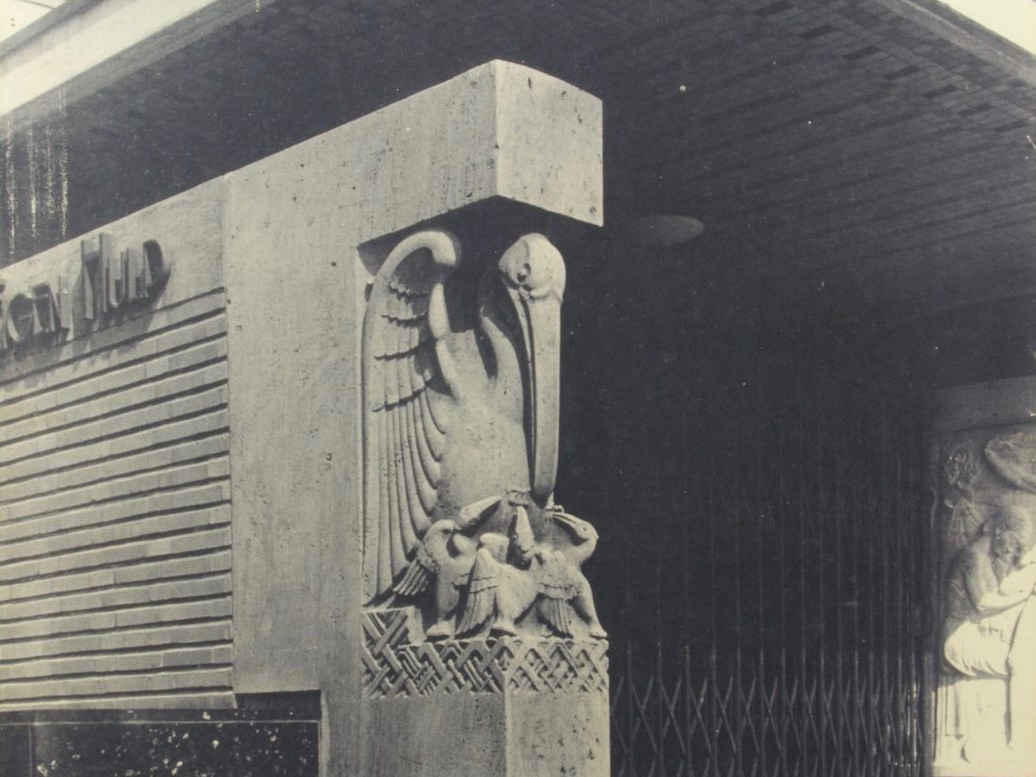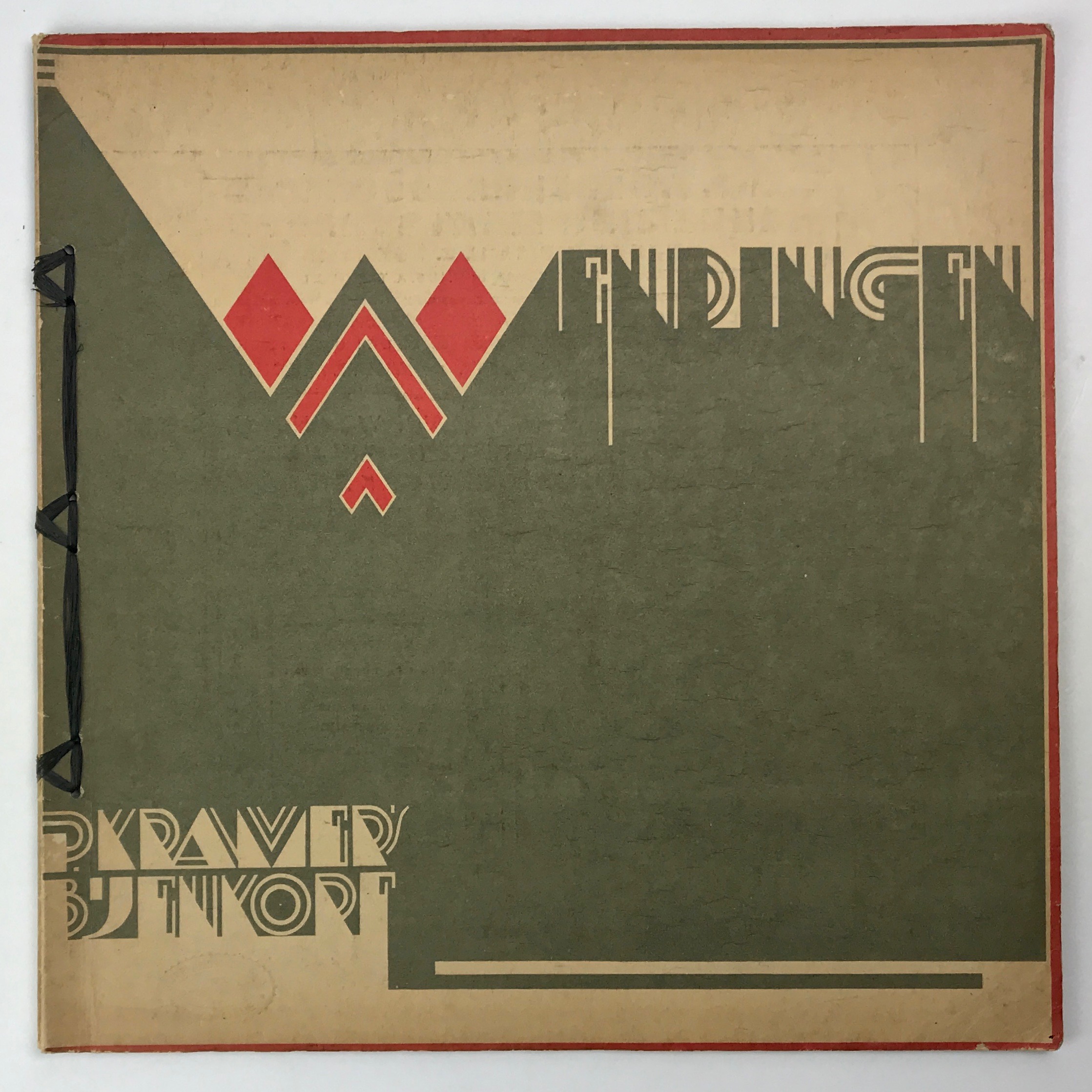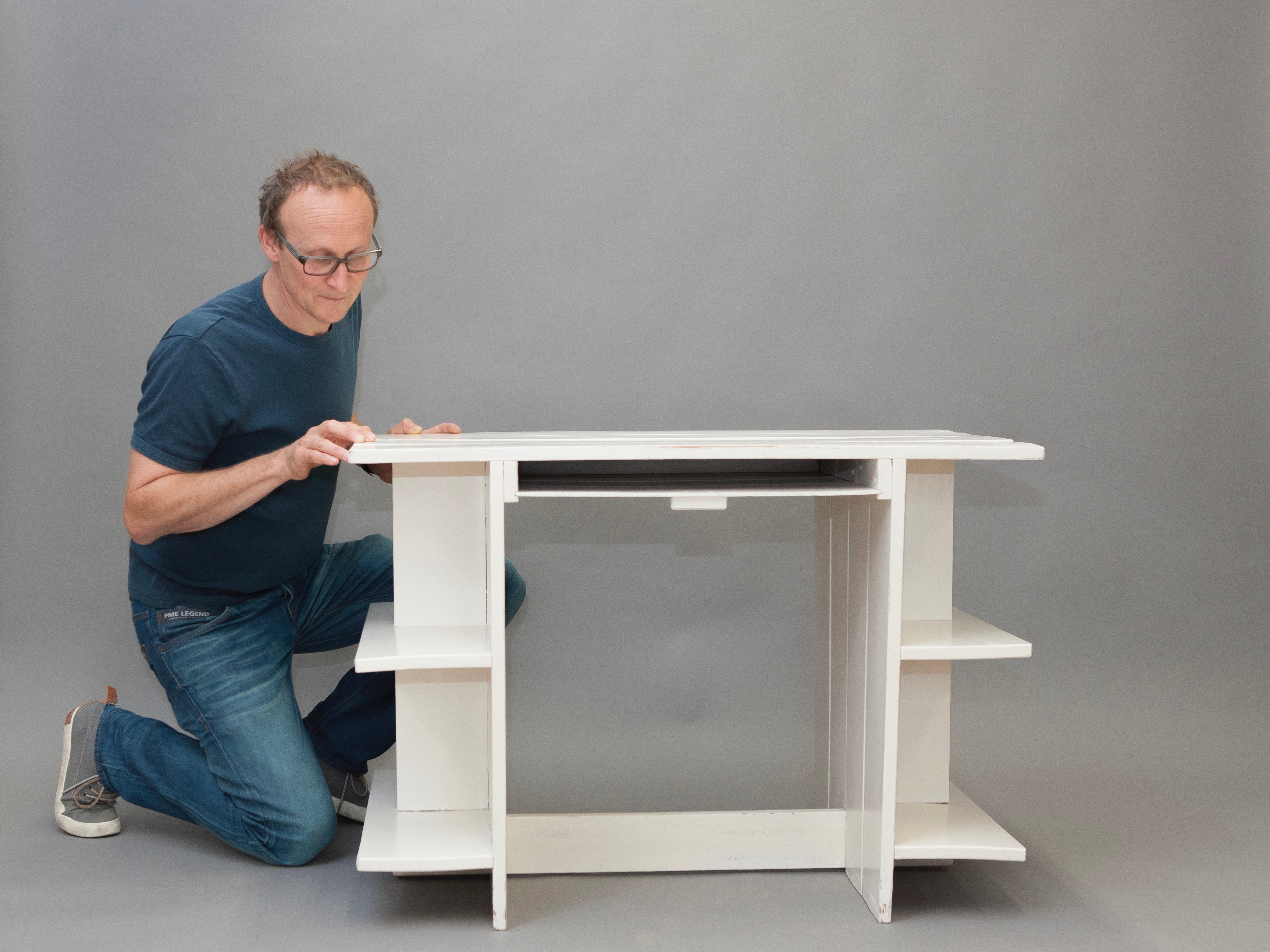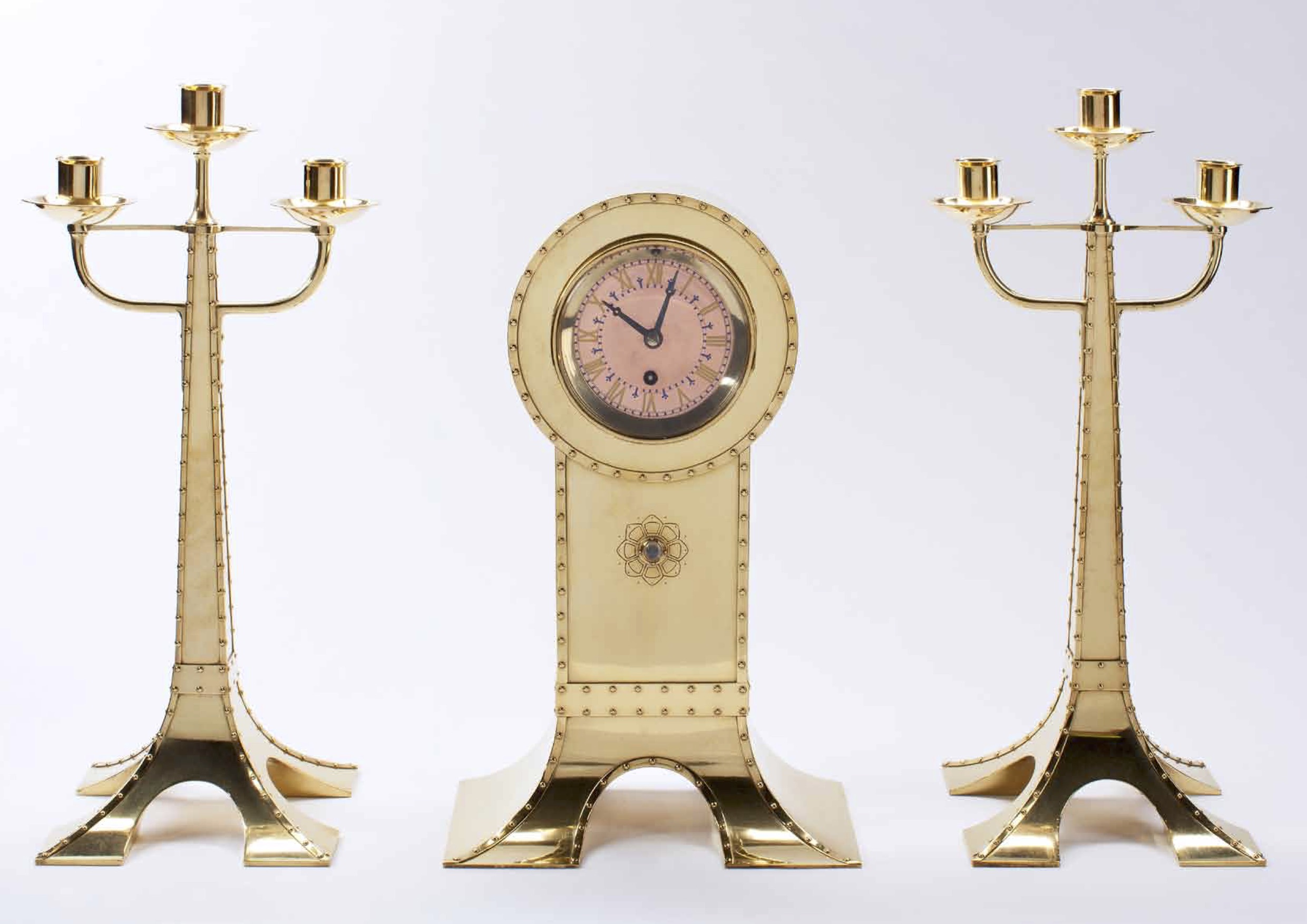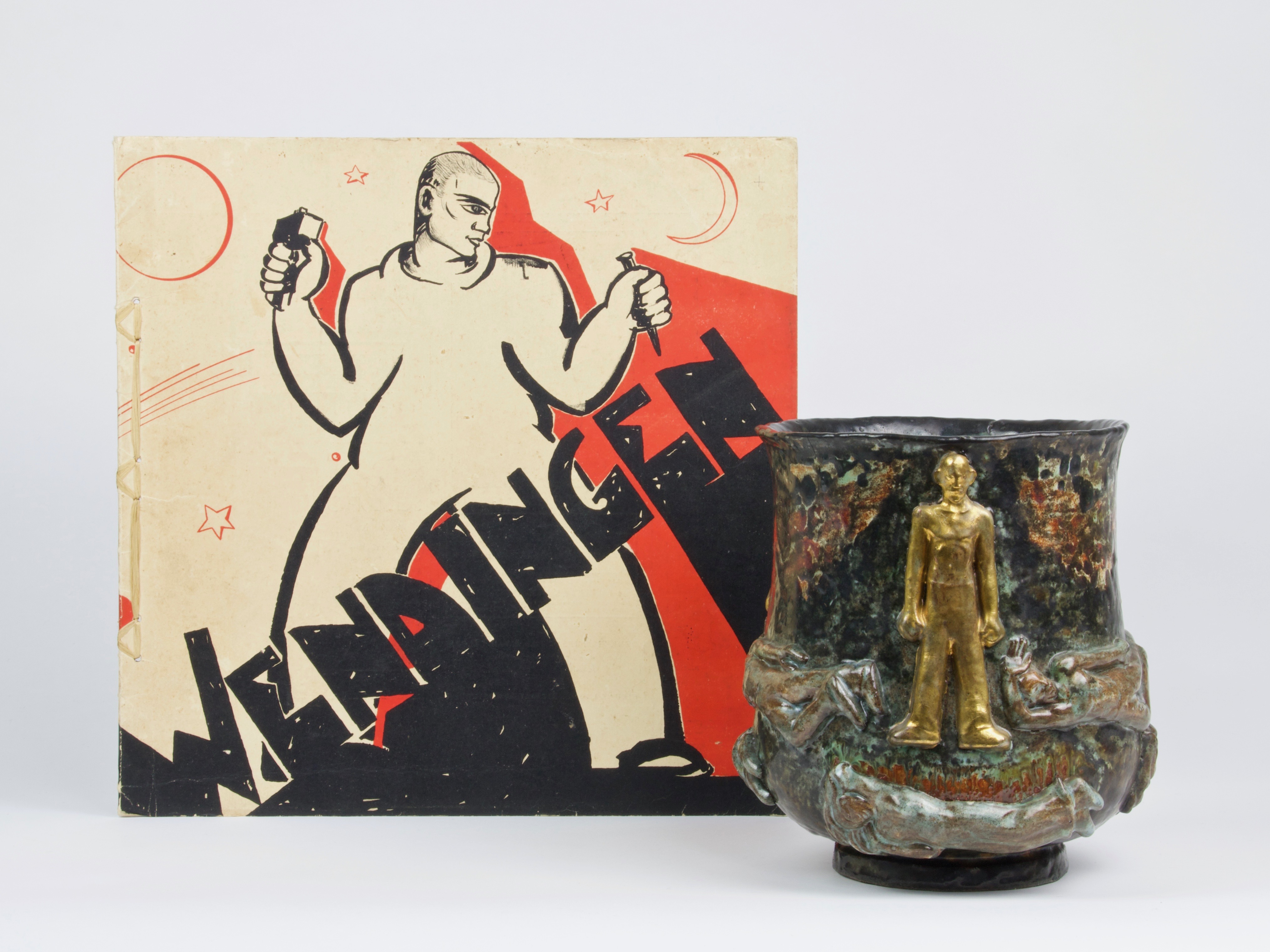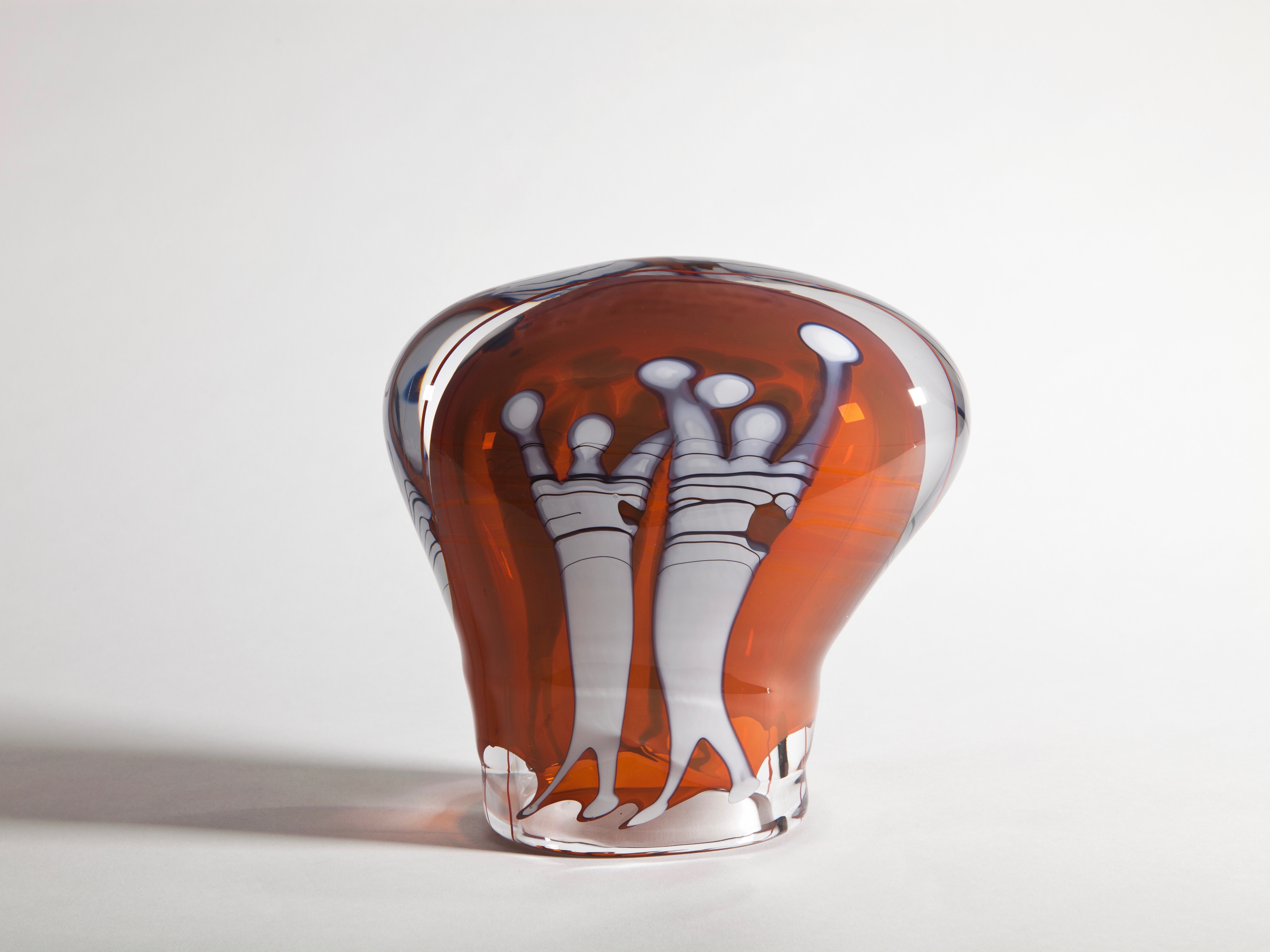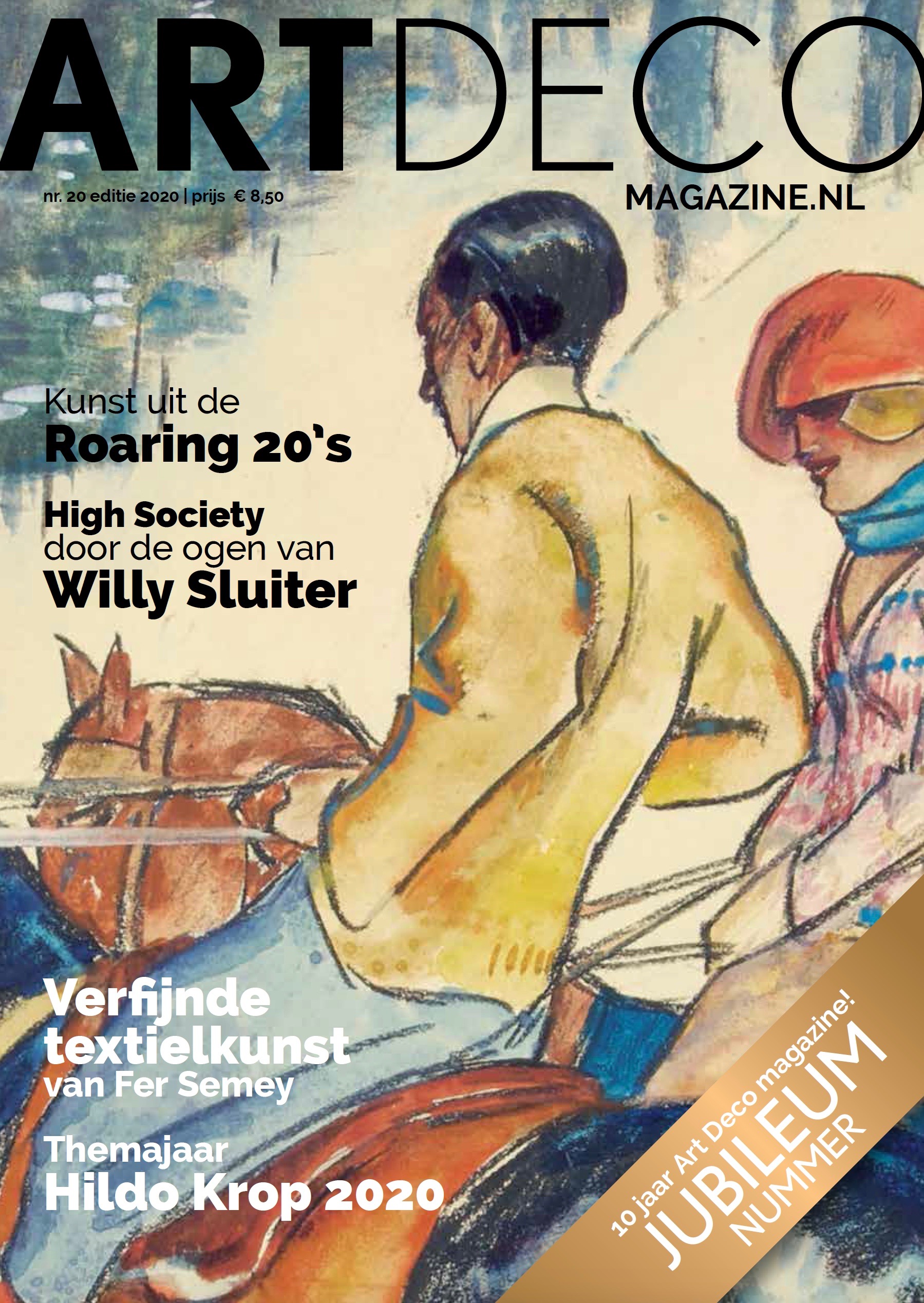Sculptor Hendrik van den Eijnde rediscovered
“Who has memories of sculptor Hendrik van den Eijnde or knows where any of his work is still to be found?’ With calls in heritage publications and regional media, the historical associations of Haarlem and Heemstede searched for particularities for an exhibition about their famous fellow citizen, who was born 150 years ago. They were surprised and enthusiastic when Kunstconsult responded: “We have the original plaster model of the pelican.” “The pelican?!” “Yes! The pelican!”
The plaster model of the pelican with young, manufactured in 1932, is this spring one of the eyecatchers of the exhibition Beeldhouwer Van den Eijnde (1869-1939) herontdekt (Sculptor Van den Eijnde (1869-1939) rediscovered), on show until June 30 at the ABC Architectuurcentrum in Haarlem. During the exhibition, the historical associations organized lectures and bicycle tours along the sculptures of Van den Eijnde. One of those sculptures is the pelican, executed in tuff, which found its second home in Heemstede in 1979.
Breakthrough: Het Scheepvaarthuis
Hendrik Albertus van den Eijnde was born into a catholic family in Haarlem. His first profession was mirror maker. As a sculptor, he initially made religious work, for example for the St. Bavo church in Haarlem. But he would become most famous as a sculptor of monuments and façade decorations for residential and company buildings. Van den Eijnde had already passed forty when he broke through with his sculptures for the Scheepvaarthuis in Amsterdam, the striking building by architect Joan van der Mey, which now houses Grand Hotel Amrâth Amsterdam. From 1913 until 1916, Van den Eijnde led the workshop where the sculptures for this iconic Amsterdam School building where executed. In this workshop, where amongst others Hildo Krop and Anton Rädecker worked, a new impulse was given to sculptures in stone.

Editor of Wendingen
His heyday as a sculptor runs parallel to that of the Amsterdamse School. In 1917 he started his own studio, which was in his self-designed studio home at the Van de Veldekade in Heemstede since 1922. He was also a sculptor for the Rijksgebouwendienst from 1917 until 1923. Hendrik van den Eijnde was a member of the editorial board for the art magazine Wendingen, also called “the voice of the Amsterdam School movement”. Once he designed a cover himself: in 1920 one of his woodcuts adorned the cover of edition 8/9, dedicated to Josef Hofmann.
Gold and silver medal in Paris
It is exactly eighty years ago that the Frans Halsmuseum in Haarlem organized an honorary exhibition for Van den Eijnde, a few months after his death. Monumental sculptures by the famous Haarlem artist were even in New York (1925-1926) and Batavia (1927-1932). In 1918 he had been the initiator of the founding of the Nederlandsche Kring van Beeldhouwers. And in 1925 he received prizes at the Exposition Internationale des Arts Décoratifs in Paris. Casts of his entrance sculptures for the Scheepvaarthuis were awarded with a gold medal; in the category metal work he earned a silver medal. Van den Eijnde – like many contemporaries - was particularly active as a decorative artist in the period after his work for the Scheepvaarthuis. For example, he designed furniture that was executed by Ko Pollé, the brother of his wife. Silver and bronze objects were fabricated by J.M. van Kempen & Zn.
Torpedo tea set
Van den Eijnde designed the stand of J.M. van Kempen & Zn. for the Jaarbeurs Utrecht (trade fair) in 1918. In addition to small metal sculptures by his hand, a silver urn designed by him was especially striking, an impressive object of half a meter high and decorated with figures in Amsterdam School-style, which is now a show piece in the collection of twentieth century applied arts of the Museum Boijmans van Beuningen in Rotterdam. In 1919 Van den Eijnde was asked to design the Van Kempen stand again. The walls of this room were decorated with sculptures by his hand and a large colorful cloisonné panel designed by his cousin Marie Kuyken. That year, however, Van den Eijnde stole the show with his cubist-inspired silver Torpedo tea set.
Pelican’s nest
It was this tea set that the historical associations of Heemstede-Bennebroek and Haarlem hoped to track down in the run-up to the exhibition. Unfortunately, this did not appear from a Heemstede villa. Though luckily this plaster model of the pelican could be added to the exhibition, because of the description of the tuff sculpture of the “Pelican's nest” in an announcement. Nowadays, this sculpture is in a park in Heemstede, but originally it was part of the modernist office building of an insurance company: “A pelican is a symbol for (Christian) sacrifice. She pierces her own breast with her beak to be able to feed her brood with her blood.” This sculpture from 1932 decorated the entrance to the life insurance company OLVEH in The Hague, a precursor of the current AEGON. After the demolition of the office building in 1969, a design by architect Jan Wils, member of the architect group De Stijl, the sculptures were returned to the family, who in turn donated them to the municipality of Heemstede. Since 1979, this tuff sculpture adorns the Laan van Rozenburg in Heemstede.
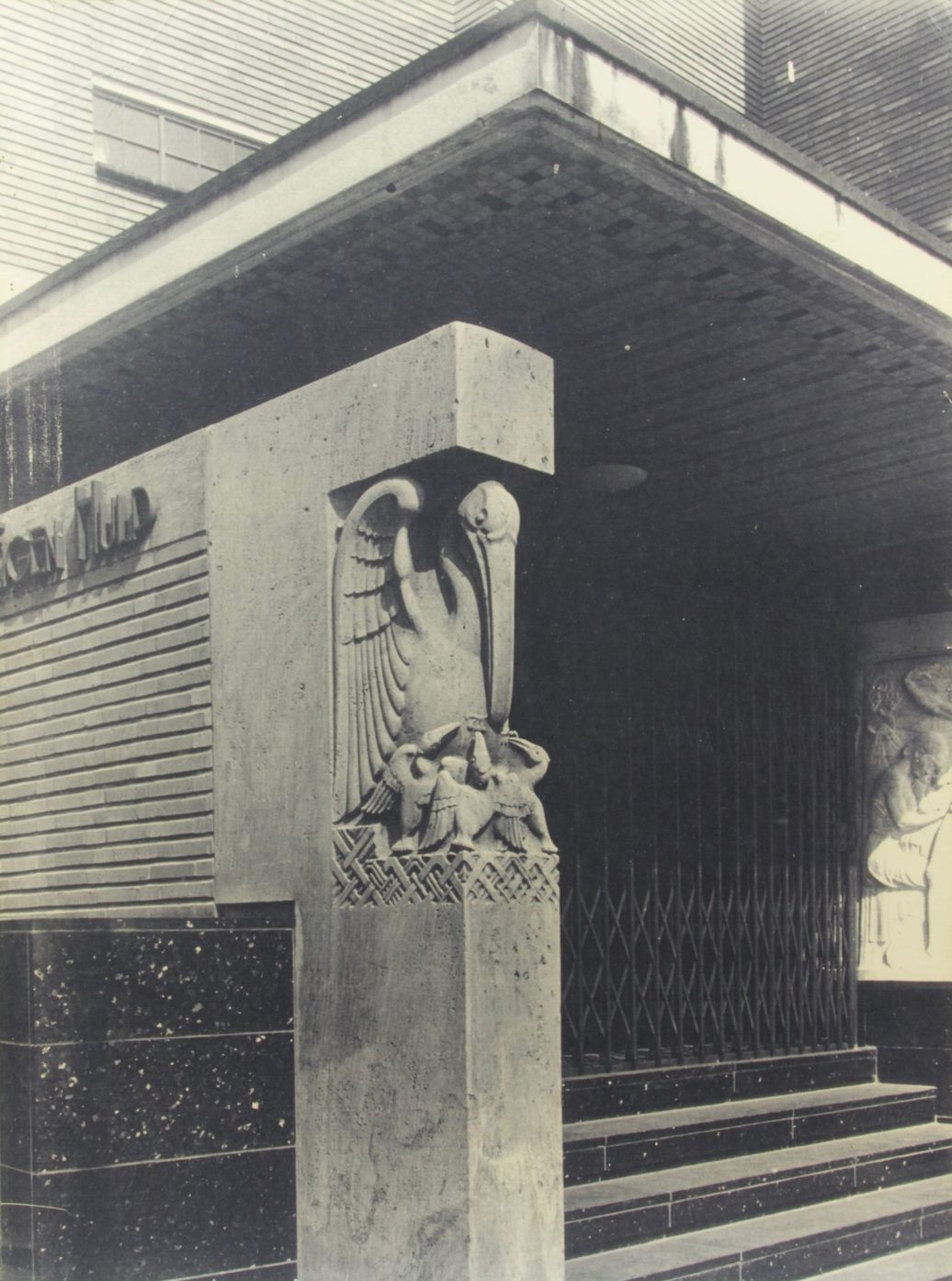
Four Worldseas
The characteristic OLVEH-building was on the Kortenaerkade in The Hague. Historical pictures of the city show how Van den Eijnde’s pelican majestically marked the entrance of the building. It was not the only striking entrance for which Hendrik van den Eijnde created a sculpture. For example, the spectacular corner entrance of the aformentioned Scheepvaarthuis stands out at the corner of the Prins Hendrikkade and the Binnenkant in Amsterdam. Anyone who steps on the stairs to the entrance is surrounded by his sculptures which have the theme of the Four World Seas (1916). The sculptures have powerful lines – because they are carved out of extremely hard granite – and are full of symbolism about sea and maritime transport. The architectural ceramics made of terracotta, which is also applied here, is more detailed.
Radio Kootwijk
Another impressive façade is that of Radio Kootwijk. Zendgebouw A, a design by architects Jules Luthmann and H. Th. Teeuwisse, is also called ‘The Cathedral’. From this radio transmitting station, built in the innovative material concrete, contact was maintained with the colonies, in particular the Dutch East Indies. It was Queen Mother Emma who spoke the legendary words here: “Hello Bandoeng, do you hear me?”. Above the entrance doors, Van den Eijnde situated sculptures also made of concrete, which refer to radiotelegraphy as a worldwide means of communication. The figures, executed in the characteristic Amsterdam School-style, show western and exotic features in a listening pose. With their hands behind their ears, they catch radio waves from foreign countries, the figures are symbolically surrounded by wavy lines. Van den Eijnde received this commission (1920-1921) thanks to his work for the Rijksgebouwendienst (Government Building Agency). The same applies for the façade sculptures he made for post offices in Haarlem (1921-1923) and Utrecht (1917-1924), both built by architects Jo Crouwel and H. Th. Teeuwisse. All these sculptures are still in their original location.

Rotterdam Bijenkorf
Unfortunately, the latter cannot be said of the two by six meters large façade sculpture that Van den Eijnde made in 1930 for Magazijn de Bijenkorf in Rotterdam. The modernist department store building, designed by Willem Dudok, was decorated on both sides with a sandstone relief, which showed a heroic image of how merchandise from all over the world was transported by plane, ship and train to the luxurious department store. The Bijenkorf building was severely damaged in 1940 during the bombing of Rotterdam, then rebuilt, but demolished in 1957. The façade sculpture was transferred to a Bijenkorf distribution center in Woerden. For years there has been the wish to place the façade sculpture back to the center of Rotterdam but finding a suitable place in the totally changed area is not easy. Last year, NRC Handelsbald wrote about a plan of Historisch Genootschap Roterodamum, which is supported by the Bijenkorf: integrating the sculpture into the new metro station. The store manager calls it ‘the dream of the Bijenkorf’. He views the return of the artwork as ‘a tribute to what was one of Europe’s most modern department stores in 1930. With escalators, fast elevators and lots of glass.’ Fortunately, the Bijenkorf building in The Hague, designed by Piet Kramer, is standing proudly. Even though almost nothing has been preserved of the richly decorated Amsterdam School interior, Van den Eijnde’s sculptures still adorn the exterior façade.
Sculptures in Haarlem
Born and raised in the area of Haarlem, Van den Eijnde was very active here. There are still a lot of his facades and sculptures located in Haarlem, Heemstede and Bloemendaal. The fame he gained with his work on the Scheepvaarthuis brought him many commissions here. He regularly collaborated with architect Han van Loghem, who also lived in Heemstede and realised residential buildings here. Van den Eijnde was also involved in the build of social housing in Schoten, which later became Haarlem-Noord. As the center of the Kastanjeplein, he designed the Troelstranaald (1920), which was executed in brick with four representations: play, work, mental development and idealism.
In the middle of the city, two of his sculptures adorn the Grote Houtburg. After renovating and broadening of the bridge, Van den Eijnde decorated it with two granite sculptures in 1930. He chose two important historical figures from the history of Haarlem: painter Frans Hals, who can be recognized by his palette and brush, and city architect Lieven de Key, equipped with a hammer and chisel.
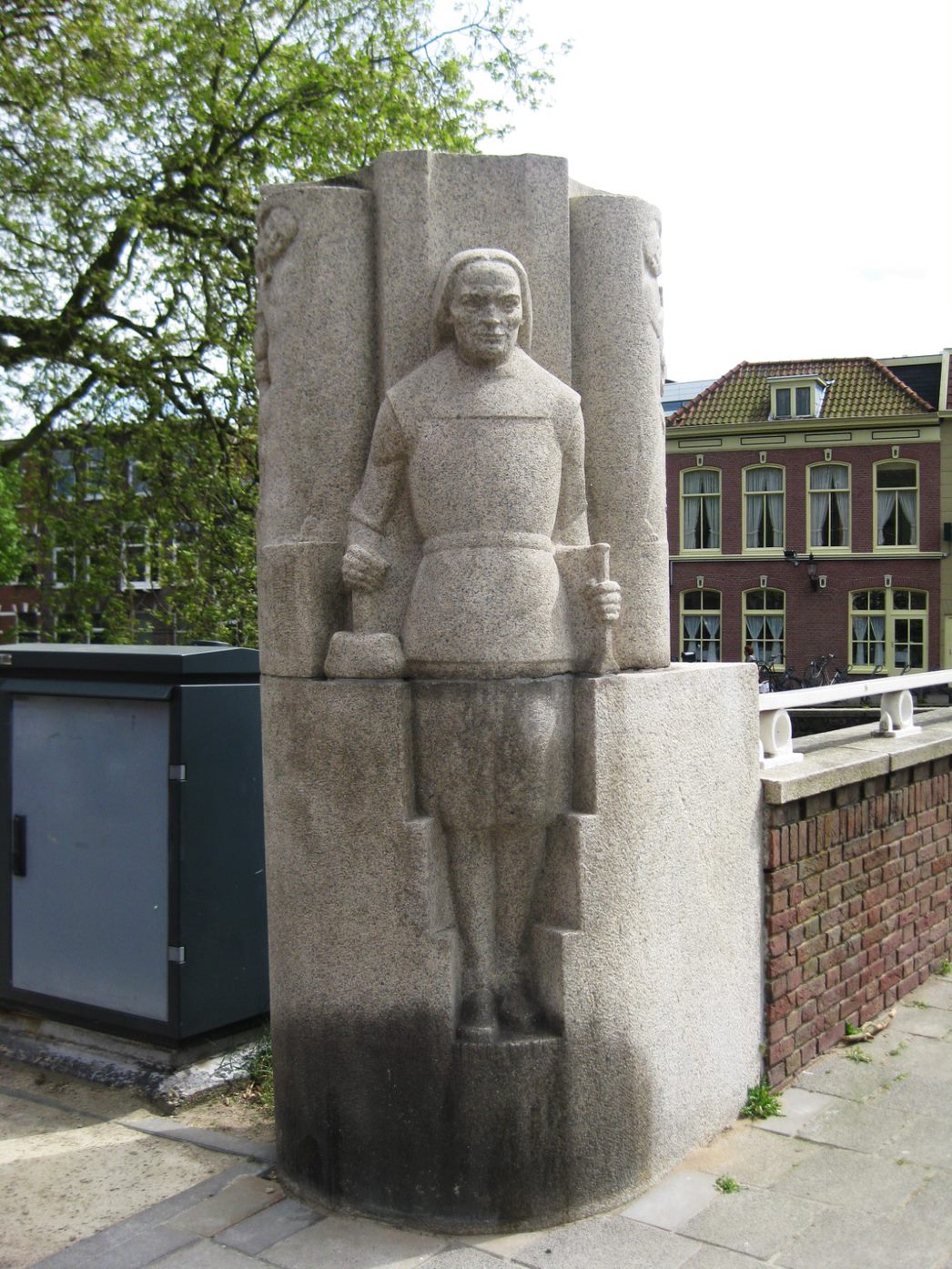
Spot the difference
Eighty years after the honorary exhibition, there is now another exhibition about Hendrik van den Eijnde in Haarlem. In the exhibition there are many photos of his work throughout the Netherlands and beyond, but also objects in stone, bronze and wood. And in plaster, such as the pelican's plaster model that is part of the Kunstconsult collection. This life-size plaster model is unique: it was modeled by the sculptor himself, as an example for the execution and with instructions about how they should carve the representation from the block of stone. During the exhibition, the plaster and tuff pelicans are close together. So take your chance, visit the exhibition, get on a bike (2.5 km) and spot the difference.

Exhibition
The plaster model of the pelican by Hendrik van den Eijnde is part of the Kunstconsult sales collection and is temporarily on loan for the exhibition Beeldhouwer Van den Eijnde (1869-1939) herontdekt (Sculptor Van den Eijnde (1869-1939) rediscovered) at the ABC Architectuurcentrum in Haarlem.
Beeldhouwer Van den Eijnde (1869-1939) herontdekt, ABC Architectuurcentrum, Groot Heiligland 47, Haarlem, until 30 June 2019, www.architectuurhaarlem.nl.
Further reading
Ype Koopmans: H.A. van den Eijnde, 1869-1939, monografie - Drents Museum, Assen, 1994.
For sale
Because he mainly made architectural sculpture and monumental work, there is rarely any work by Hendrik van den Eijnde on the market. The sculptor documented a lot and a large part of his legacy ended up at the Stichting Schone Kunsten rond 1900 and is managed by the Drents Museum. The plaster model of the pelican from this article is for sale. It is part of the Kunstconsult sales collection.
View the collection page for sales information about the plaster model of the pelican and other sculptures.
Photos: Erik Rijper, Daan Kerkvliet, Gouwenaar, Belinda Visser, Marion Golstein.
Text: Belinda Visser
© Kunstconsult – 20th century art | objects
Reproduction and distribution of this text is only allowed with correct reference.
